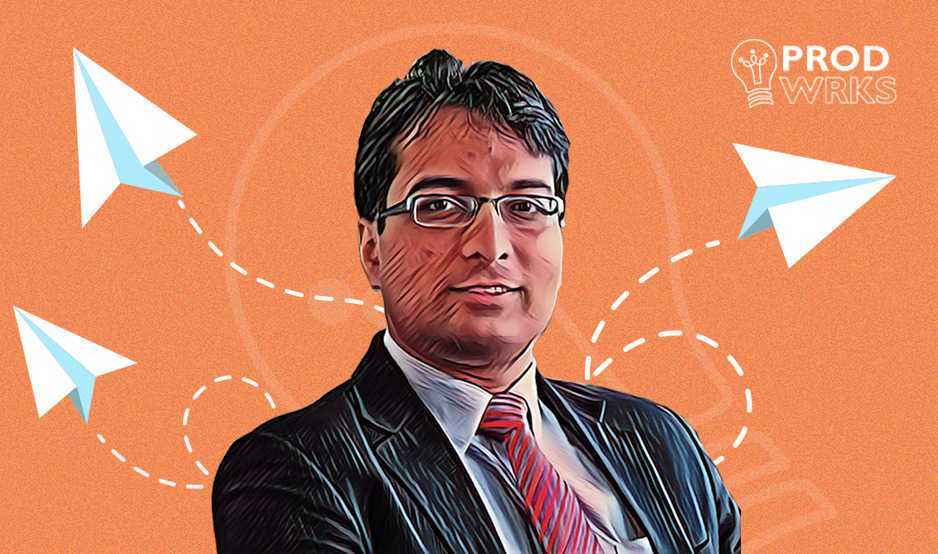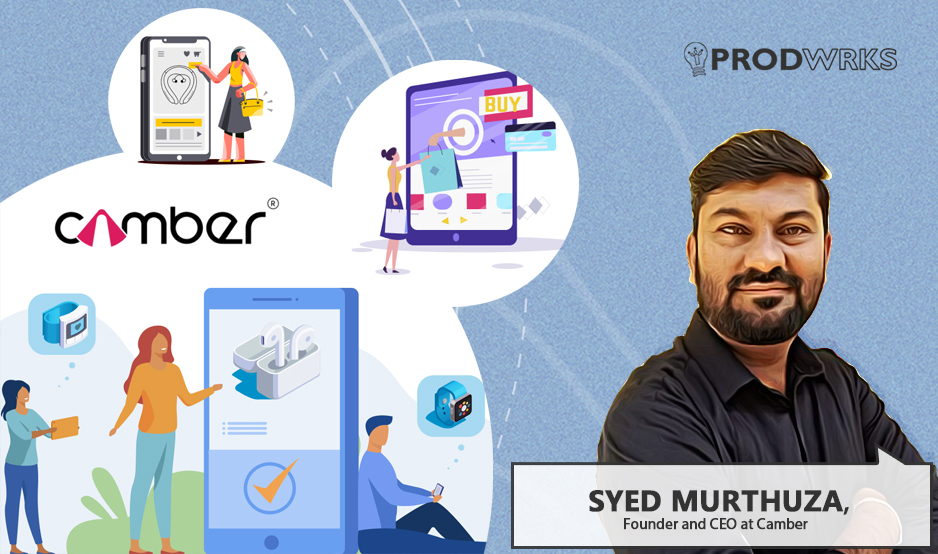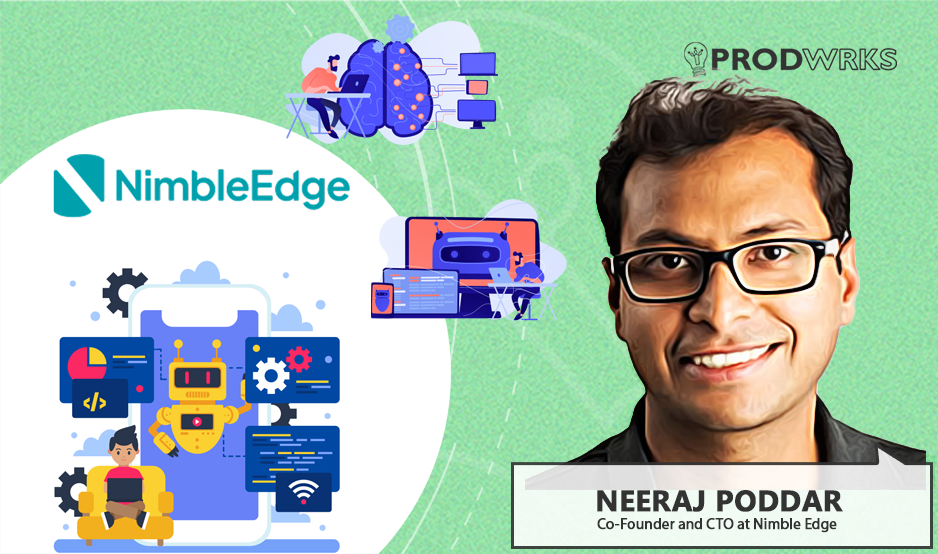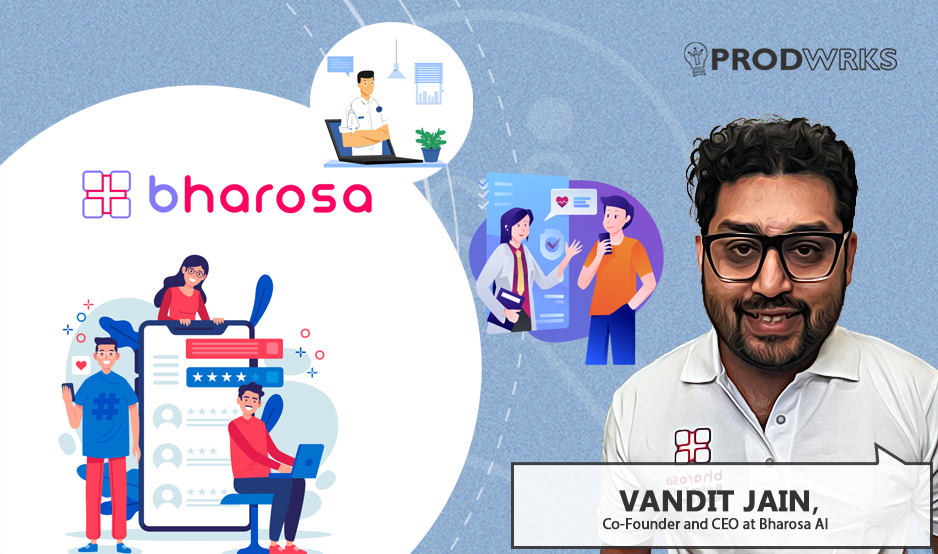
Today, Acies is also a full-fledged product development firm with an internally funded VC program that helps other non-tech founders launch their product startups using their proprietary no-code solution.
Impressive right? We thought so too. In a chat with Team ProdWrks, Muzammil Patel, the co-founder and head of strategy, finance, and operations at Acies, gives us insights into how he cracked the glass ceiling of building and scaling a tech product company as a non-tech founder.
Insight #1: It all starts with founder-market fit
All founding members of Acies have decades of experience in the BFSI sector, and have worked together for many years in the Big Four firms where they advised large corporations. Muzammil, for instance, has 10 years experience working with Ernst and Young and five years with Deloitte before starting Acies.
"The real reason for starting Acies however was to take all this knowledge in the BFSI domain and convert it into scalable products. The fundamental idea was to make this knowledge repeatable, make it more widely usable, and across a broader set of people by building products for the market," explains Muzammil.
Insight #2: The hardest part of building a tech company
As we all know product development is no cakewalk and when people think of tech products, they think that the hardest part is coding. But, it is actually not.
“Coding comes much later. The first step is deciding your architecture, deciding which technology you're going to work with and why. That’s the hardest part,” says Muzammil.
Some of the biggest challenges when you startup are “identifying what is good tech, what fits your scenario, making it scalable, and architecting it right.” According to Muzammil, this is hard to get right because “picking a tech stack that is number one today may not always be the right choice for you.”
Muzammil says that the right way to do this is by first having a clear roadmap for your product.
“Selecting a tech architecture depends on how you want to build your vision and your roadmap. You can spend days or months evaluating tech, and then the final decision is a snap if you have your product roadmap clear.”
Insight #3: The second hardest part of building a tech company
For Muzammil, the challenge was to switch from a consulting mindset to a product mindset. This is true for most first-time product founders who come from different non-technical backgrounds.
“We are traditionally used to dealing with specific outcomes and finite, deterministic approaches. But this changes in a product company and we must embrace unpredictability. Be prepared to fail and try again as your future vision and roadmap purely depends on how you architect this phase,” says Muzammil.
Contrary to what people think, a lack of technical knowledge is not the only challenge faced by non-tech founders starting a product company. The hard part is to find the switch to make decisions from a product mindset.
Insight #4: Think twice before hiring a CTO
There are typically two approaches that non-tech product founders take to build tech products. The first approach is to either onboard a CTO as a co-founder or hire an internal technical resource. The second approach is to outsource product development to an external product development firm.
“We didn't get a CTO and we didn't hire a tech team. We decided to reskill and learn everything ourselves. We hired our first pure tech employee almost a year and a half after starting Acies. It's the harder path to take because we spent six months invested in unlearning and relearning everything through trial and error,” says Muzammil.
The reason behind the decision was a fairly simple one for Muzammil. It’s because he wanted everyone Acies hired to be first strong in the BFSI domain “with the expectation that they’ll be hands-on and learn the tech needed to solve their purpose.”
Insight #5: Bootstrapping
This is where the domain expertise of the founders in the BFSI sector came in handy. The founders of Acies did not jump into products headfirst and did not expect a return on investments immediately. They decided to wet their feet first with their consulting business by capitalizing on their domain expertise.
“We didn't raise any capital and till today we haven’t raised any external funding. Though we were in the business of building products from day one, we understood that there's a gestation period for the technology to find its market. So, we used our consulting business as essentially a way to generate free cash flows to fund product development," Muzammil explains.
Their efforts paid off months later when they got their first client who signed up exclusively to buy their product exclusively and not their consultation service. Today, their efforts are validated as there are about 14 large insurance firms that use the first product that Acies developed – an interest rate derivative lifecycle management system that today processes over $8 billion worth of derivatives!
The key takeaway for product founders here is ‘delayed gratification’ and how Acies effectively used free cash flow from consulting and put it all into product development, taking feedback and improving it by applying real-world use cases to develop a successful product. This again is a result of having strong domain expertise and a great founder-market fit.
Insight #6: MVPs don't work in BFSI
From not hiring a CTO or a tech team to bootstrapping product development, we saw that Acies is no stranger to bucking trends and taking the road less traveled. In a similar vein, another key decision they took early on was to NOT take the MVP route to product development.
“The tough part for us working in the BFSI sector is that we don't have the runway like a typical product company to do an MVP, have somebody adopt it, and then iterate. All the trial and error has to happen at our end, largely with the expertise we have collected over the years,” says Muzammil.
Though the risks of failure is high in this approach where you may have to trash a product if it doesn’t work, so are the rewards as the organizations that Acies deals with, “scale quickly” and bring higher revenue in a shorter span.
Insight #7: Minimize risk with no-code development
But Muzammil and his team at Acies figured out a way to minimize this risk of failure by being one of the early adopters of no-code product development in the BFSI sector. This led to the birth of their no-code product builder, Revolutio, which Acies now also offers as a SaaS solution.
"As it stands today, everything Acies builds will be built on no-code, or not at all,” states Muzammil.
Insight #8: No-Code in B2B - A bet for the future
Muzammil believes that the next spurt of growth in no-code adoption will be led by B2B businesses rather than in the B2C space.
“B2C businesses tend to adopt technology a lot quicker and are ready to experiment. On the other hand, B2B businesses are very conservative because they have a lot more at stake. Due to the slow pace of tech adoption in the B2B space, we are now seeing a number of legacy systems reaching their end of life today and we are discovering more use cases for products built using no-code development to replace these legacy systems,” says Muzammil.
Muzammil predicts that while B2C will continue to adopt and innovate in no-code product development, a lot of these innovations will transpose down to the B2B sector. And due to the phasing out of legacy systems in B2B space, “from a scale perspective, adoption on the B2B side will be much quicker and much larger till it becomes the standard across the industry.”
The Acies Ventures-Revolutio Program
Having walked the hard miles as non-tech founders in the tech domain, the founders of Acies have now decided to help other non-tech founders by offering funding and strategical and technical assistance through their Ventures-Revolutio program.
Through the Acies Ventures-Revolutio program, Acies provides founders with access to capital , professional guidance, and usage rights to their no-code platform Revolutio, for building their technology product or service.
"We focus on founders who are domain specialists, who know the exact pain points of their industry, and want to build solutions to address these pain points; but, they may have not been entrepreneurs in their lives, or may not have the mental bandwidth to deal with technology, operations, and everything that goes with it.”
Muzammil says, “The participants so far in the Ventures program have all been in the format of JVs, where we invest into the JV, provide the platform, hand-hold them through the entire product development to market process.”
Key Takeaway: Stop Fearing Tech
Muzammil says that the most important thing for product founders is to learn the tech, understand the tech, and don’t rely entirely on a third party to build your tech.
He says, “Don’t rely on only your CTO or one of the co-founders to do it. It’s very easy for most of us to kind of get overwhelmed with the quantum of information and uncertainty that comes with having too many technology options. But I think that’s the fear you should overcome first.”
"The minute you stop fearing tech, there's a whole bunch of opportunities that open up.”
Muzammil Patel, Co-founder of Acies Tweet




